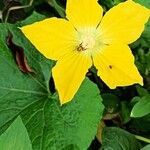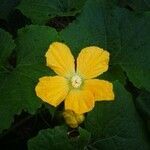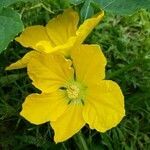| Therapeutic use
|
Antidotes (fruit), Antineoplastic agents (fruit), Antitussive agents (fruit), Antiviral agents (fruit), Aphrodisiacs (fruit), Asthma (fruit), Central nervous system depressants (fruit), Common cold (fruit), Constipation (fruit), Cough (fruit), Diabetes mellitus (fruit), Diet, food, and nutrition (fruit), Diuretics (fruit), Dyspepsia (fruit), Epilepsy (fruit), Fever (fruit), Heart diseases (fruit), Hemoptysis (fruit), Hemorrhage (fruit), Hemorrhoids (fruit), Hemostasis (fruit), Hemostatics (fruit), Inflammation (fruit), Jaundice (fruit), Laxatives (fruit), Lung diseases (fruit), Mental disorders (fruit), Nervous system diseases (fruit), Pain (fruit), Anti-poisoning (fruit), General tonic for rejuvenation (fruit), Respiratory tract diseases (fruit), Scorpion stings (fruit), Syphilis (fruit), Tranquilizing agents (fruit), Antiperiodic (fruit), Cathartics (leaf), Contusions (leaf), Cooling effect on body (leaf), Hypersensitivity (root), Anthelmintics (seed), Antineoplastic agents (seed), Antipyretics (seed), Appendicitis (seed), Cestoda (seed), Cough (seed), Diuretics (seed), Epilepsy (seed), Exanthema (seed), Fever (seed), Gonorrhea (seed), Heart diseases (seed), Hemorrhage (seed), Liver diseases (seed), Lung diseases (seed), Syphilis (seed), Thirst (seed), Urinary bladder calculi (seed), Urination disorders (seed), Urethral discharge (seed), Abscess (unspecified), Anodyne (unspecified), Cough (unspecified), Diuretic (unspecified), Dysuria (unspecified), Eruption (unspecified), Expectorant (unspecified), Fever (unspecified), Gonorrhea (unspecified), Heat (unspecified), Hemoptysis (unspecified), Internulcer (unspecified), Longevity (unspecified), Lung (unspecified), Phthisis (unspecified), Pimple (unspecified), Rash (unspecified), Thirst (unspecified), Tonic (unspecified), Vermifuge (unspecified), Wound (unspecified), Demulcent (unspecified), Laxative (unspecified), Cosmetic (unspecified), Gravel (unspecified), Suppurative (unspecified), Tumor (unspecified), Abdomen (unspecified), Aperient (unspecified), Bruise (unspecified), Epilepsy (unspecified), Hysteria (unspecified), Antidotes (unspecified), Asthma (unspecified), Brain diseases (unspecified), Constipation (unspecified), Contusions (unspecified), Demulcents (unspecified), Diabetes mellitus (unspecified), Diet, food, and nutrition (unspecified), Diuretics (unspecified), Dyspepsia (unspecified), Epistaxis (unspecified), Exanthema (unspecified), Heart diseases (unspecified), Hemorrhage (unspecified), Hemorrhoids (unspecified), Hoarseness (unspecified), Malnutrition (unspecified), Mental disorders (unspecified), Nervous system diseases (unspecified), Nootropic agents (unspecified), Increase physical endurance, strength and stamina (unspecified), Anti-poisoning (unspecified), Respiratory tract diseases (unspecified), Syphilis (unspecified), Tuberculosis, pulmonary (unspecified), Ulcer (unspecified), Central nervous system diseases (whole plant excluding root)
|



